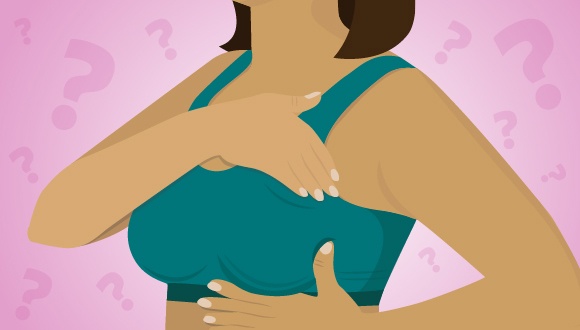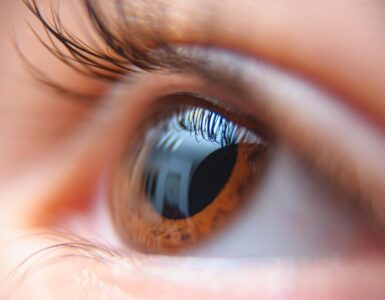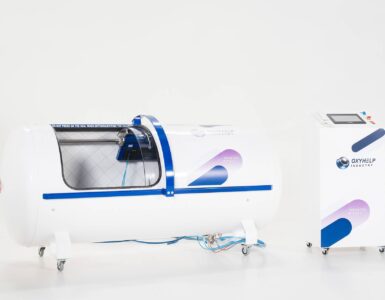You might witness tender breasts during your painful periods, your breasts might be feeling heavier, not every breast pain is cancer but some maybe. Check out this once to know when to worry about those breast pains.
Breast tissue is a delicate and important part of a female body. From being an element that develops to mark the onset of adulthood to the one feeding and nurturing a new life, breast tissue undergoes multiple variations every time the female enters a different age group. In most cases, the variation in shape, size and texture of skin is physiological and is considered normal, as mostly seen when the girl enters puberty and starts to develop secondary sexual characters and during the lactation period.
According to a Breast specialist Singapore, breast pain is not abnormal every time. Breast pain, heaviness in the breast, libido and vaginal discharge are some normal callings of ovulation. Many women even witness breast tenderness during their pre-menstruation phase. Breast changes are a normal phenomenon, but you must not always let the warning signs find their escape. There are certain symptoms that breast doctors, specialists and gynaecologists consider red flags. These signs and symptoms might turn out to be a precursor of some drastic medical condition such as breast cancer, better stay aware of yourself.
Breast changes that you must talk about:
Here are some of the common symptoms that we should be aware of when it comes to breast and female health:
1. Breast Lumps:
Breast lumps are firm structures that can be palpated by the woman or a healthcare professional. These structures can be a result of any infection or injury. Many times these lumps may be precursors of cancerous tumours or might be just non-cancerous lumps. Let’s talk about the causes and types of breast lumps to spot out the differential diagnosis:
Causes of Breast Lumps:
1- Infectious Breast Lumps:
The infections are of very common occurrence in lactating women. The reason behind this is the milk that gives the microbes an optimum medium to grow and frequent encounter of the breast tissue with the environment. Another common cause of infectious breast lumps is piercing. Nipple piercing is getting into trends, but that is knocking on the door of breast infection that could eventually lead to mastitis. Furthermore, in lactating women, clogged milk ducts are very frequently seen these days.
Infections may show in the form of pus-filled pockets or cellulitis.
A breast doctor specialist from Singapore advises the women to look for signs of infection: unbearable tenderness and pain over the breast, reddish skin over nipples and breast skin and pus-filled spots. Women must keep a check on breast hygiene and clean clothing. Especially the lactating women must go for a regular breast checkup.
Sudden acute breast injuries:
Breast tissue is one of the most delicate tissues of the body. When the breast has any major trauma or cut, this results in bleeding of small blood vessels that make a wide network and are dispersed in breast tissue. When this small blood vessel bleeds, the blood starts to get clogged leading to hematoma; this hematoma can be felt as a lump.
This breast injury can be caused due to an abrupt cut, a fall on the stomach and even a previous biopsy. There is a phenomenon known as fat necrosis, which goes by the name. The breast is made up of fat and after an injury, there begins necrosis which results in breast lumps.
Lumps caused due to fat necrosis are not cancerous and can be removed easily with the proper medical protocol.
Non-Cancerous Lumps:
There are many lumps and non-cancerous growths that are less harmful and can be felt easily by the clinician or the woman.
- Benign Tumors:
These tumors occur commonly in men and women of age group 30 – 35 yrs. The most common of them are fibroadenomas. The solid structures are painless but may feel tender. Many teenagers and women witness these non-cancerous tumors.
- Cyst:
Cysts are commonly found structures that cause lumps. If you spot fluid-filled sacs that are painful and tender during your teenage or menstrual cycle, beware they might be the breast cyst. These are non-cancerous and appear in different dimensions but are a matter of concern.
Look for a gynecologist or breast specialist to get a clinical diagnosis and proper medications or surgical protocol.
- Fibrocystic:
Another cyst has a fibrous origin. These are extremely painful non-carcinogenic lumps that are seen in over-sensitive women. Many times over sensitivity of hormones result in lumps that are irregular in shape. The breasts are usually addressed as fibrocystic breasts.
- Cancerous Lumps
The most alarming lumps are cancerous and malignant lumps. They show variable symptoms and many times no symptoms at all.
When to Consider those lumps cancerous?
Cancerous lumps mostly show no symptoms but many times they give you alarming signs:
- Nipple Discharge:
If you are witnessing purulent or clean nipple discharge without any touch or incision then this might be a sign of malignancy. Intraductal papillomas often present with nipple discharge thus, it can be a sign of cancer of breast tissue and must be properly assessed and treated by the breast doctor specialist.
- Signs Of Inflammation:
The four signs of inflammation are redness, swelling, pain and warmth may also indicate cancer. They might be just due to underlying infection but if you are witnessing all four it’s time to get yourself clinically diagnosed. Paget’s disease of the breast, breast rashes and nipple eczema are some other causes of breast pain and redness.
- Indentation of breast tissue
A marked change in nipple direction, breast skin and noticeable difference in the breast contour are the common observations that add to the matter of concern. They are mainly seen in cancer of the breast and need urgent attention.
2- Breast Pain:
Let us begin by stating something good, “Breast pain is a rare symptom of breast cancer”
In most instances, breast pain is caused due to physiological changes: the two most witnessed situations are:
- During Menstruation
- During Pregnancy
Mastalgia or breast pain is the commonest scenario in women. This breast pain is usually due to a surge in sexual hormones, and should not be a matter of concern. There are times when the breast pain comes along with other symptoms like fever, nipple discharge, and redness. This time you need to see a doctor.
Here are a few common reasons for having breast pain. So, instead of getting worried, educate yourself and take the help of a gynecologist in case you find the pain abnormal.
- Hormonal:
The most common reason for breast pain is hormonal fluctuations. This is mainly seen during the menstrual cycle where the two hormones estrogen and progesterone keep swinging along with other sex hormones. The fluctuations often lead to mild breast tenderness with heaviness in the breast. That is completely normal and you need not worry about it until it’s over the saturation.
- Cysts and Infections:
This cause is where you need a doctor on the earliest call. As a discussed priority, when the pain comes along with a lump and other symptoms then it may be due to underlying fibrocystic lumps or fat necrosis.
- Engorgement of Breast during lactation:
This is again a physiological condition that is related to overfilling of breasts.
- Lifestyle Causes:
Smoking, some iatrogenic effects, using a badly fitting bra and improper diet are some lifestyle-related causes that may lead to breast pain. You must adopt a healthy lifestyle and take good care of hygiene and diet.
Get Yourself Diagnosed:
Breast lumps and breast pain are very common findings these days which may be due to the modern lifestyle, improper diet or due to rapid genetic mutations. They may give a red flag indicating malignancy or might be just regular physiological adaptations. In any case, you must do a self-examination of the breast for the presence of lumps, tenderness or redness and when you feel anything abnormal you must consult a doctor soon.
Mammogram: Doctors use this imaging test to identify abnormalities in your breast tissue. Your doctor may advise you to get ultrasonography or an MRI. In the later stages, you might be advised to go for a breast tissue biopsy.
Concluding the Words:
The breast is a tissue of extreme value that is made up of fat and water. In any case of confusion or symptoms go see a doctor. Your doctor will help you make an exact diagnosis and prescribe you the proper medications. Additionally, women must be made aware of the delicacy of breast tissues and taught to do a self-examination of the breast. Reduce the risk factors and a healthy lifestyle with some modifications can save you from drastic breast diseases. Read more health care solutions and guides.




























